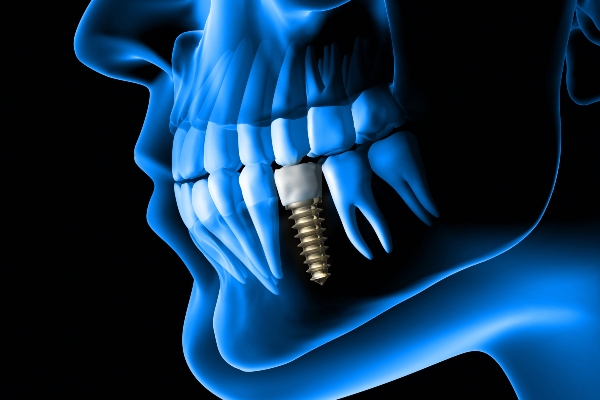When Bone Grafting is Needed for Dental Implants

If your jawbone structure is not robust enough to support dental implants, you may require bone grafting. It's important to understand what bone grafting is and how it is an important part of having dental implants. Let's take a closer look at bone grafting and when you may need them for dental implants.
When patients need dental implants
There are multiple reasons why patients may be missing teeth. Excessive tooth decay, gum disease, or shattered teeth can cause damage that can only be remedied by the actual removal of the affected tooth. Advanced oral health issues like periodontitis can also cause tooth loss.
For patients who are missing teeth or need to have some extracted, they may be able to replace them with dental implants. These are artificial tooth roots that will be screwed into the jawbone to replace the missing teeth. The dentist can then attach a dental restoration onto the implants, such as crowns or dentures.
Some patients choose to get dental implants for cosmetic and self-confidence issues, particularly if they are missing multiple teeth. However, dental implants can also raise the quality of their life, allowing them to chew, eat, and other everyday functions. Additionally, dental implants can prevent bone tissue loss, as the artificial posts stimulate the jawbone similarly to natural tooth roots.
An overview of bone grafting
In some cases, people may have an insufficient amount of bone density to support the implants. This is more often the case when teeth have been missing for a long time. To fix this, dentists can add bone to your jawbone through a procedure called bone grafting. There are a couple of specific kinds of bone grafting, including:
- Socket preservation: This procedure is done immediately after the dentist removes the tooth to prevent additional bone loss.
- Sinus augmentation: The dentist adds bone tissue to the patient's upper jaw to strengthen it for future implant placement.
Regardless of the kind of bone grafting material, it will take many months for the bones to fuse with the patient's jawbone to provide the necessary support for dental implants.
What to expect from bone grafting
To determine whether bone grafting is the best option for the patient, the dentist will take 3D images of the mouth and examine the bone structure. If the existing structure is insufficient for implants, the additional bone must be added through a grafting procedure.
The surgery itself is a low-risk procedure. The dentist will cut into the patient's gums and cut a hole in the jawbone. They will then fill the space with the bone graft and seal the incision. In cases where the patient uses bone tissue from a different part of their body, the dentist will need to harvest a small piece from a predetermined area, such as the chin or hip.
Risks and side effects of bone grafting include infection, excessive bleeding, nerve damage, and unsuccessful grafts. However, it is important to note that these are uncommon outcomes, and the procedure itself is relatively safe.
Recovering from bone grafting
Depending on the size of the bone graft, it can take about a week for the patient to initially recover. However, it is important to remember that it takes at least three months for the bone graft to fully integrate with the jawbone. For larger bone grafts, it can take an average of nine to 12 months to fully heal.
Ask your dentist about bone grafting
Bone grafting can be a complex dental treatment. Reach out to our team to learn more about whether bone grafting is a solution for you and what you can expect throughout the process. Call us at our Brooklyn office to schedule an appointment.
Request an appointment here: https://www.brooklynsmile.com or call Brooklyn Smile & Dental Implants at (718) 752-7429 for an appointment in our Brooklyn office.
Check out what others are saying about our dental services on Google: Will I Need a Bone Graft for Dental Implants in Brooklyn, NY.
Related Posts
Dental implants can be an effective tooth replacement option for anyone missing one or a few teeth or those needing all their teeth replaced. Many consider implants state-of-the-art tooth replacement. However, to enjoy this option's many benefits, the patient must be a suitable candidate for the procedure. Here are some key factors to take into…
Approval for dental implants puts you one step closer to restoring a complete, healthy smile. Dental implants can restore both the appearance and functionality of a full set of teeth. This way, patients can enjoy a full set of teeth along with a smile they enjoy showing off. The process is somewhat lengthy, so knowing…
Dental implants are stable structures that can replace missing teeth. They consist of durable, biocompatible materials. Knowing why these restorations last for a long time can motivate you to invest in your dental health. Here are the details on how long dental implants can serve you.Dental implants fuse with the jawbone and gum tissue. The…
Dental crowns are a reliable and durable solution for restoring the appearance and function of damaged teeth. While dental crowns are designed to last years, proper care and maintenance are essential for extending their lifespan. Following practical steps and working closely with your dentist can protect your investment and enjoy a confident smile for years.Maintaining…
